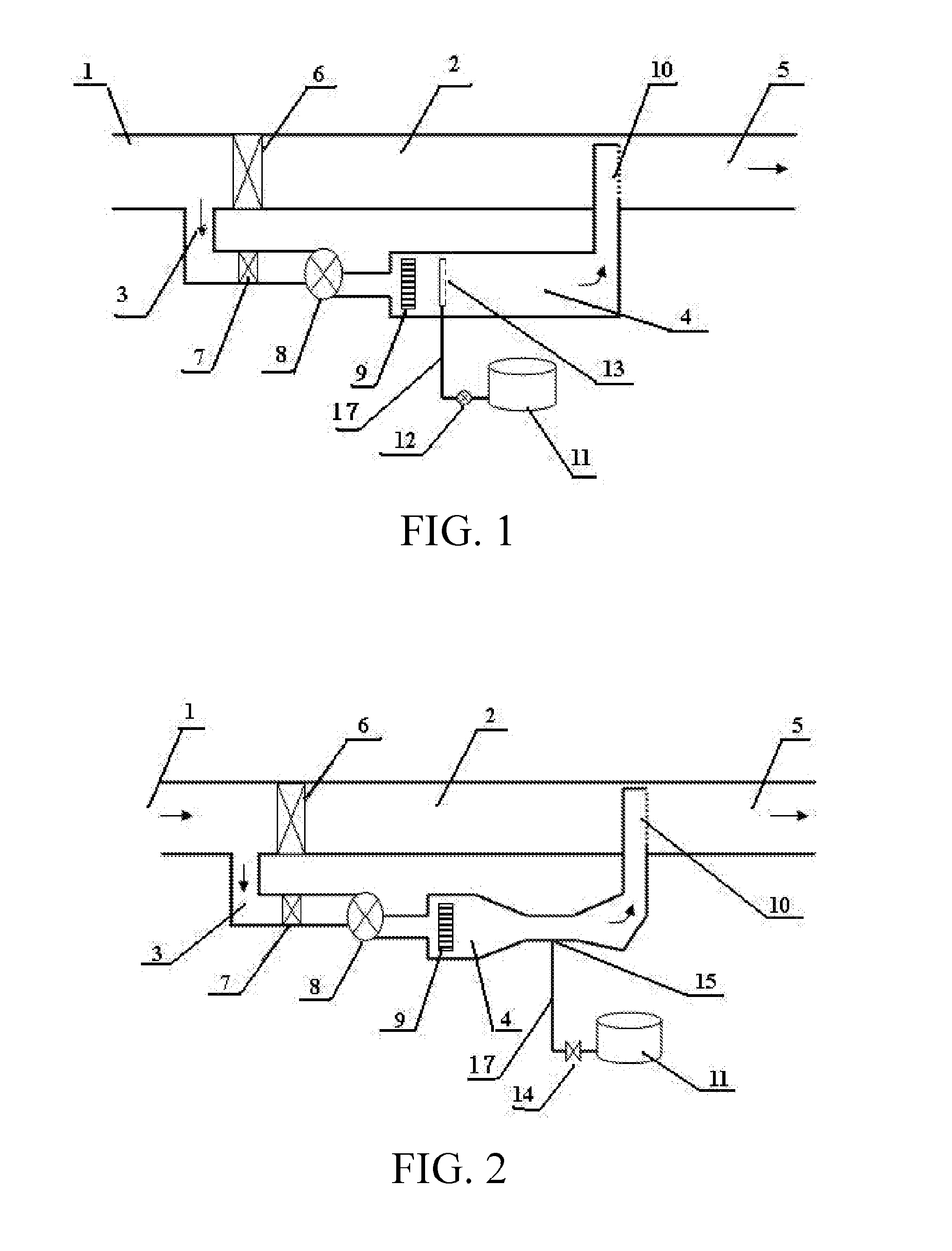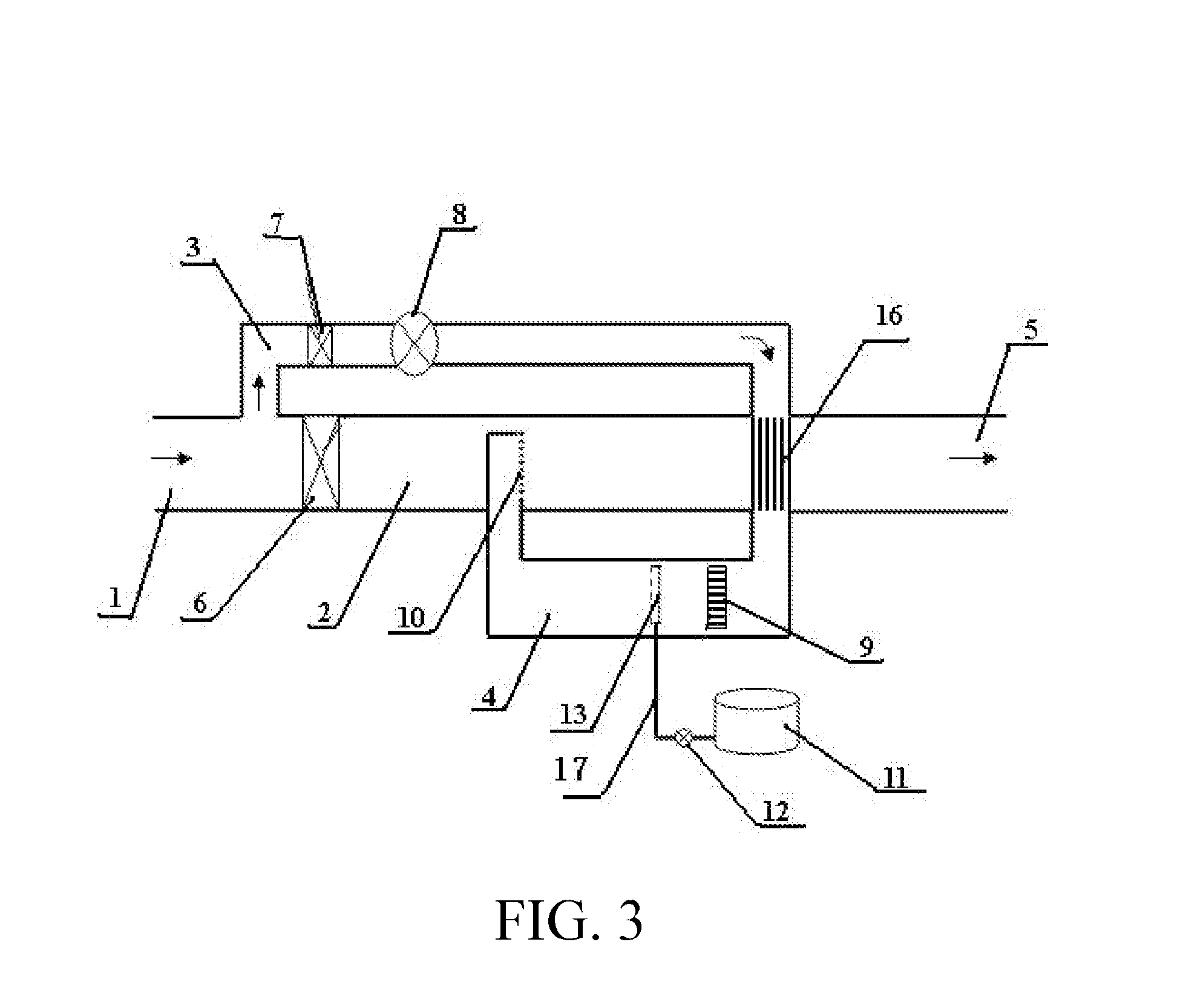Process and apparatus for removal of nitrogen oxides, sulfur oxides and mercury from off gas through oxidization
a technology of oxidizing process and equipment, which is applied in the direction of mechanical vibration separation, separation process, machines/engines, etc., can solve the problems of imposing a big challenge to de-dust operation, low reaction efficiency, and frequent rinse on the heat exchanger surface, etc., to achieve pure and convenient re-use, reduce the energy required for oxidization, and eliminate nox and heavy metals
- Summary
- Abstract
- Description
- Claims
- Application Information
AI Technical Summary
Benefits of technology
Problems solved by technology
Method used
Image
Examples
embodiment 1
[0057]The apparatus depicted in FIG. 1 is composed of an off gas main pipe, a sub-stream branch pipe and an oxidizing agent injection device, wherein the inlet end and the outlet end of the sub-stream branch pipe 3 are connected respectively to the upstream and downstream between inlet 1 and an outlet 5 of the off gas main pipe 2, and the flue gas outlet 5 of the off gas main pipe 2 is connected to a scrubbing device; near the inlet end of the sub-stream branch pipe 3 a sub-stream branch pipe control valve 7 and a blower 8 are installed; moreover, a control valve 6 is also set in the off gas main pipe 2 at the location near to and downstream of inlet end opening of the sub-stream branch pipe 3 for controlling and adjusting the air flow rate of the sub-stream branch pipe 3; near the outlet end in the sub-stream branch pipe 3, there is a heating reaction chamber 4; a electrical heater 9 is installed in the heating reaction chamber 4; the oxidizing agent injection device is composed of...
embodiment 2
[0058]The apparatus depicted in FIG. 2 has a similar structure as that in Embodiment 1, except that at the end of the delivery pipeline 17 of the oxidizing agent injection device there installed a Venturi tube to suck the oxidizing agent; meanwhile, the oxidizing agent injection control valve 14 was installed in the delivery pipe 17 and near the oxidizing agent storage tank 11, for controlling the injection rate of hydrogen peroxide.
embodiment 3
[0059]The structure of the embodiment 3 was shown in FIG. 3 and was generally the same as those in FIG. 1 and FIG. 2, wherein a large proportion (for example more than 10%) of the off gas is shunted into the sub-stream branch pipe, the sub-stream off gas is fed back into the mainstream pipe and mixed with the unheated mainstream off gas. In this embodiment the temperature of the mixed off gas is substantially increased; to recover thermal energy in the mixed off gas, a heat exchanger 16 was installed in the mainstream pipeline to conduct a portion of the heat from the hot gas of the mixture to the inlet off gas of the sub-stream branch pipe having relatively low temperature.
PUM
| Property | Measurement | Unit |
|---|---|---|
| mole ratio | aaaaa | aaaaa |
| temperature | aaaaa | aaaaa |
| temperature | aaaaa | aaaaa |
Abstract
Description
Claims
Application Information
 Login to View More
Login to View More - R&D
- Intellectual Property
- Life Sciences
- Materials
- Tech Scout
- Unparalleled Data Quality
- Higher Quality Content
- 60% Fewer Hallucinations
Browse by: Latest US Patents, China's latest patents, Technical Efficacy Thesaurus, Application Domain, Technology Topic, Popular Technical Reports.
© 2025 PatSnap. All rights reserved.Legal|Privacy policy|Modern Slavery Act Transparency Statement|Sitemap|About US| Contact US: help@patsnap.com


